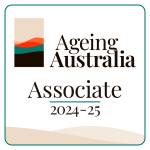Revolutionizing Elderly Care: Nursing Agencies Lead the Way 2025

The Vital Role of Nursing Agencies in Maintaining High Standards of Care for the Elderly in Aged Care Homes
In an era of rapidly aging populations and increasing demands for quality care, nursing agencies have emerged as crucial players in the aged care sector. These agencies are not just filling staffing gaps; they are revolutionizing the way we approach elderly care, particularly in aged care homes. This article delves into the multifaceted role of nursing agencies and their impact on maintaining high standards of care for our seniors.
Introduction: The Growing Need for Quality Elderly Care
As we stand on the brink of a demographic shift, the importance of nursing agencies in aged care cannot be overstated. The number of individuals aged 85 and older is projected to more than double from 6.5 million in 2022 to a staggering 13.7 million by 2040. This surge in the elderly population brings with it an unprecedented demand for specialized care services, particularly in aged care homes.
Nursing agencies are at the forefront of meeting this challenge, offering a blend of professional expertise, personalized care, and innovative approaches that are reshaping the landscape of elderly care. Their role extends far beyond merely providing staff; they are integral to maintaining and elevating the standards of care in aged care facilities across the nation.
The Evolution of Nursing Agencies in Aged Care
Historical Context
The concept of nursing agencies in aged care is not new, but their role has evolved significantly over the years. Historically, these agencies primarily served as staffing solutions, providing temporary workers to fill gaps in care homes. However, as the healthcare landscape has changed, so too has the function of these agencies.
Current Relevance
Today, nursing agencies are pivotal in addressing the complex care needs of an aging population. They are no longer just stopgap measures but integral partners in delivering comprehensive, high-quality care. This shift has been driven by several factors:
- Demographic Changes: The rapid aging of the population has created an unprecedented demand for specialized care services.
- Evolving Care Models: There’s a growing emphasis on person-centered and holistic care approaches.
- Technological Advancements: The integration of technology in care delivery has necessitated a more skilled and adaptable workforce.
- Regulatory Changes: Stricter regulations in aged care have raised the bar for quality standards, requiring more specialized and trained staff.
Key Concepts in Nursing Agency Care
Person-Centered Care Approach
At the heart of modern nursing agency practices is the person-centered care approach. This model focuses on treating each resident as an individual with unique needs, preferences, and life experiences. Dan Wenger, a leading expert in the field, emphasizes, “By building meaningful relationships and providing personalized support, agencies can improve client engagement and satisfaction, enhance caregiver retention, and foster better health and wellness outcomes.”
This approach involves:
- Tailoring care plans to individual needs and preferences
- Involving residents in decision-making about their care
- Respecting cultural and personal values
- Focusing on quality of life, not just medical treatment
Holistic Care Model
Nursing agencies are increasingly adopting a holistic care model, which considers the physical, emotional, social, and spiritual needs of residents. This comprehensive approach ensures that care extends beyond mere medical treatment to encompass overall well-being. Key aspects include:
- Mental health support
- Social engagement programs
- Spiritual care options
- Nutritional guidance
- Physical activity tailored to individual capabilities
Community-Based Care Integration
A significant trend in nursing agency care is the integration of community-based approaches. This involves building local networks of care providers, volunteers, and community organizations to create a more supportive environment for elderly care. For instance, Anodyne Services has pioneered partnerships with local gyms, libraries, and social clubs to offer additional resources and activities, enriching the lives of individuals in aged care homes.
Latest Statistics and Trends
The landscape of aged care is rapidly evolving, shaped by demographic shifts and changing healthcare needs. Recent statistics paint a compelling picture of the current state and future trajectory of the industry:
Workforce Shortage
The demand for care professionals is reaching unprecedented levels. According to recent data, home health and personal care aides are currently the most in-demand job in the United States. This shortage is particularly acute in aged care homes, where the need for specialized care is constant.
Prevalence of Chronic Conditions
The health profile of the elderly population underscores the need for skilled care:
- 90% of adults aged 65 or older experience at least one chronic condition
- Common conditions include diabetes, hypertension, and heart disease
- These complex health needs require a workforce trained in managing multiple chronic conditions simultaneously
Economic Pressures
The aged care sector is not immune to broader economic trends:
- Families are experiencing increased economic pressures
- This has led to a decrease in the average number of care hours per week that clients receive
- Nursing agencies are challenged to maintain quality care while adapting to these financial constraints
Expert Opinions and Industry Insights
Industry leaders are at the forefront of shaping the future of nursing agency care in aged care homes. Their insights provide valuable perspectives on current trends and future directions:
Technology Integration in Care Operations
Neal Kursban, CEO of Family & Nursing Care, highlights the transformative role of technology: “Not only do AI and other software solutions give us accurate, data-driven insights that help inform our strategy, it saves us time so we can focus on what’s most important – providing access to care for older adults.”
Key technological advancements include:
- AI-driven care management systems
- Electronic health records for seamless information sharing
- Wearable devices for real-time health monitoring
- Telehealth solutions for remote consultations
The Importance of Person-Centered Care
Dan Wenger emphasizes the critical nature of personalized care approaches: “By building meaningful relationships and providing personalized support, agencies can improve client engagement and satisfaction, enhance caregiver retention, and foster better health and wellness outcomes.”
This approach involves:
- Tailoring care plans to individual preferences and needs
- Involving residents and their families in care decisions
- Training staff in empathetic and personalized care delivery
Case Study: Community-Based Approaches
Anodyne Services provides an exemplary case study in community-based care integration. Their innovative approach involves:
- Building Local Networks: Establishing partnerships with local healthcare providers, community organizations, and volunteers.
- Enriched Care Environment: Collaborating with local gyms, libraries, and social clubs to offer diverse activities and resources.
- Holistic Support: Addressing not just medical needs but also social, emotional, and cognitive aspects of well-being.
Results of this approach include:
- Improved quality of life for residents
- Enhanced community engagement and social connections
- More comprehensive and varied care options
Current Trends and Future Projections
The aged care sector is witnessing rapid evolution, with several key trends shaping its future:
Technological Advancements in Care Delivery
- AI and Machine Learning: Predictive analytics for early intervention and personalized care planning.
- IoT Devices: Smart home technologies adapted for aged care settings, enhancing safety and independence.
- Virtual Reality: For cognitive stimulation and reminiscence therapy.
Expansion of Service Offerings
Nursing agencies are broadening their scope to provide more comprehensive care:
- Specialized dementia care programs
- Rehabilitation services integrated into daily care
- Wellness and preventive health initiatives
Shift Towards Community-Based Care Models
The future of aged care is increasingly community-centric:
- Integration of aged care homes with local community services
- Partnerships with local healthcare providers for seamless care continuity
- Community engagement programs to reduce social isolation
Impact Analysis
The role of nursing agencies in aged care homes has far-reaching implications:
On the Healthcare Industry
- Alleviation of pressure on hospitals through better preventive care
- Driving innovation in care delivery models
- Influencing healthcare policy and funding allocations
On the Elderly Population and Their Families
- Improved quality of life and health outcomes for residents
- Greater peace of mind for families
- More options for personalized and culturally appropriate care
On the Broader Society and Economy
- Job creation in the healthcare sector
- Potential reduction in overall healthcare costs through preventive care
- Addressing the challenges of an aging population more effectively
Comparison with Alternative Care Options
Understanding how nursing agency care in aged care homes compares to other options is crucial for informed decision-making:
| Aspect | Nursing Agency Care in Aged Care Homes | Home Care | Hospital-at-Home Programs |
|---|---|---|---|
| Level of Care | 24/7 professional care | Intermittent care based on schedule | Intensive, hospital-level care at home |
| Social Interaction | High, with other residents and staff | Limited, mainly with caregivers | Limited, focused on medical care |
| Cost | Generally higher, but varies | Can be more cost-effective | Typically covered by insurance, limited availability |
| Personalization | Balanced between individual and group needs | Highly personalized | Focused on medical needs |
| Access to Medical Care | Immediate access to nursing staff | Depends on caregiver schedule | High, with regular medical staff visits |
| Independence | Structured environment with some limitations | Promotes maximum independence | Temporary, focused on recovery |
Controversies and Debates
The aged care sector faces several ongoing challenges and debates:
Workforce Shortage and Immigration Policies
- The critical shortage of caregivers is exacerbated by restrictive immigration policies
- Debate on relaxing immigration rules for healthcare workers versus investing in local workforce development
Balancing Cost-Effectiveness and Quality Care
- Pressure to keep care affordable while maintaining high standards
- Discussions on government funding models and private sector involvement
How To: Implementing High-Quality Care in Nursing Agencies
For nursing agencies aiming to elevate their care standards in aged care homes, consider the following steps:
1. Develop a Comprehensive Staff Training Program
- Focus on person-centered care principles
- Include modules on managing chronic conditions common in the elderly
- Provide ongoing education on the latest care technologies and practices
2. Implement a Robust Quality Assurance System
- Regular audits of care practices
- Feedback mechanisms for residents and families
- Continuous improvement processes based on data and feedback
3. Foster Strong Relationships with Healthcare Providers and Community Organizations
- Establish partnerships with local hospitals and specialists
- Collaborate with community groups for social and recreational activities
- Engage with local educational institutions for research and internship programs
4. Utilize Technology for Efficient Care Coordination
- Implement electronic health record systems
- Use AI-driven scheduling and resource allocation tools
- Adopt telehealth solutions for remote consultations
5. Establish Clear Communication Channels with Clients and Their Families
- Regular family meetings and updates
- User-friendly platforms for sharing care plans and progress reports
- Open-door policies for addressing concerns and suggestions
FAQ Section
Q1: How do nursing agencies ensure continuity of care in aged care homes?
A: Nursing agencies maintain continuity of care through:
- Comprehensive handover processes between shifts
- Detailed electronic health records accessible to all care staff
- Consistent assignment of caregivers to specific residents where possible
- Regular team meetings to discuss resident care plans and progress
Q2: What qualifications should I look for in a nursing agency for elderly care?
A: Key qualifications include:
- Proper licensing and accreditation
- Specialized training in gerontology and aged care
- Experience in managing chronic conditions common in the elderly
- Strong references and positive reviews from other aged care homes
- Commitment to ongoing staff training and development
Q3: How can nursing agencies address the cultural needs of diverse elderly populations?
A: Strategies include:
- Hiring a diverse workforce reflecting the community’s demographics
- Providing cultural competency training to all staff
- Offering language support services
- Incorporating culturally specific activities and dietary options
- Collaborating with cultural community organizations
Q4: What role do nursing agencies play in end-of-life care in aged care homes?
A: Nursing agencies are crucial in end-of-life care, providing:
- Specialized palliative care services
- Emotional support for residents and families
- Coordination with hospice services when needed
- Assistance with advance care planning
- Dignified and compassionate care in the final stages of life
Q5: How do nursing agencies coordinate with other healthcare providers in aged care settings?
A: Coordination involves:
- Regular communication with residents’ primary care physicians
- Establishing protocols for seamless transfers to and from hospitals
- Participating in multidisciplinary care teams
- Utilizing shared electronic health record systems
- Organizing specialist visits and telehealth consultations within the aged care home
Challenges and Solutions
Challenge 1: High Staff Turnover
Solution: Improve working conditions and career development opportunities
- Competitive salaries and benefits packages
- Clear career progression pathways
- Regular recognition and reward programs
- Flexible scheduling options
- Mentorship programs for new staff
Challenge 2: Maintaining Consistent Care Quality Across Different Aged Care Homes
Solution: Standardized protocols and regular audits
- Develop and implement standardized care protocols across all partnered homes
- Conduct regular quality audits and assessments
- Provide centralized training programs to ensure consistency
- Implement a robust feedback system from residents and families
- Use data analytics to identify and address quality variations
Challenge 3: Adapting to Rapidly Changing Healthcare Regulations
Solution: Ongoing education and compliance monitoring
- Establish a dedicated compliance team to stay abreast of regulatory changes
- Provide regular updates and training sessions on new regulations
- Implement a compliance management system to track and ensure adherence
- Collaborate with legal experts specializing in healthcare regulations
- Participate in industry associations for early insights into upcoming changes
Ethical Considerations and Best Practices
Nursing agencies must navigate a complex landscape of ethical considerations to ensure the highest standards of care:
Respecting Patient Autonomy and Dignity
- Involve residents in care decisions whenever possible
- Protect privacy during personal care activities
- Encourage independence in daily activities
- Respect individual choices, even when they differ from staff recommendations
Maintaining Confidentiality and Data Privacy
- Implement strict data protection policies
- Train staff on the importance of confidentiality
- Secure electronic health records with advanced encryption
- Obtain proper consent for sharing information with family members
Addressing End-of-Life Care Decisions Ethically
- Facilitate discussions about advance care directives
- Provide support for residents and families in making difficult decisions
- Ensure staff are trained in ethical decision-making frameworks
- Collaborate with ethics committees for complex cases
Promoting Inclusivity and Cultural Sensitivity in Care Delivery
- Develop culturally competent care plans
- Celebrate diversity through inclusive activities and events
- Provide multilingual services where possible
- Train staff on cultural sensitivity and unconscious bias
Success Stories and Testimonials
Case Study: Improved Health Outcomes Through Personalized Care Plans
A nursing agency partnering with Sunnybrook Aged Care Home implemented a highly personalized care approach, resulting in:
- 30% reduction in hospital readmissions
- 25% improvement in resident satisfaction scores
- 40% decrease in medication errors
“The personalized care plan developed by the nursing agency has transformed my mother’s quality of life. She’s more engaged, happier, and her health has significantly improved,” shared Sarah Thompson, daughter of a resident.
Testimonial: Family Member’s Experience
John Davis, whose father resides in an aged care home staffed by a nursing agency, states:
“The difference in care provided by the nursing agency is remarkable. Their staff not only attend to my father’s medical needs but also engage him in activities he loves. The personal touch and professionalism have given our family great peace of mind.”
Tools, Equipment, and Resources
To maintain high standards of care, nursing agencies utilize a range of modern tools and resources:
Electronic Health Record Systems
- Centralized patient information accessible to all authorized staff
- Real-time updates on resident conditions and care plans
- Integration with pharmacy and laboratory systems for seamless care coordination
Wearable Health Monitoring Devices
- Continuous monitoring of vital signs
- Fall detection and prevention systems
- Sleep pattern analysis for better care planning
AI-Driven Care Management Software
- Predictive analytics for early intervention
- Automated scheduling and resource allocation
- Personalized care plan generation based on individual data
Specialized Equipment for Mobility and Daily Living Assistance
- Advanced mobility aids tailored to individual needs
- Ergonomic lifting and transfer equipment for staff and resident safety
- Adaptive devices to promote independence in daily activities
Conclusion
The role of nursing agencies in maintaining high standards of care for the elderly in aged care homes is more crucial than ever. As we face the challenges of an aging population, these agencies are at the forefront of innovation, driving improvements in care quality, personalization, and efficiency.
The future of nursing agencies in aged care homes is bright but not without challenges. Opportunities lie in technological advancements, community integration, and personalized care models. However, addressing workforce shortages, adapting to regulatory changes, and balancing cost with quality remain ongoing challenges.
As we move forward, the continued improvement and innovation in elderly care will depend on the collaborative efforts of nursing agencies, healthcare providers, policymakers, and communities. By embracing person-centered care, leveraging technology, and fostering strong community connections, nursing agencies can ensure that our elderly population receives the high-quality, dignified care they deserve.
The call to action is clear: we must support and invest in nursing agencies as they continue to evolve and meet the growing needs of our aging society. Only through ongoing commitment to excellence and innovation can we ensure a future where every elderly individual in aged care homes receives the highest standard of care, respect, and dignity.
Additional Resources
For those seeking to delve deeper into the world of nursing agencies and aged care, the following resources provide valuable insights and information:
- CMS Official Policy Updates for Nursing Homes 2025 – The latest regulatory guidelines and policy changes affecting nursing homes and care agencies.
- National Association of Home Care & Hospice (NAHC) – A professional organization offering resources, advocacy, and education for home care and hospice agencies.
- American Association of Nurse Practitioners (AANP) – Provides research publications and best practices in elderly care, particularly relevant for nursing agencies operating in aged care homes.
- LeadingAge – An association of nonprofit providers of aging services, offering insights into innovative care models and policy advocacy.
- The Gerontological Society of America – A source for the latest research and best practices in gerontology and aged care.
These resources offer a wealth of information on policy updates, best practices, and emerging trends in the field of elderly care and nursing agencies. Staying informed through these channels can help agencies, care providers, and families make well-informed decisions and stay at the forefront of quality care delivery in aged care homes.








